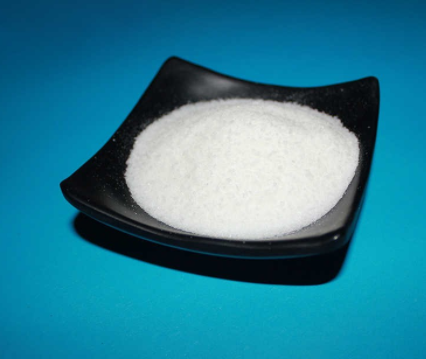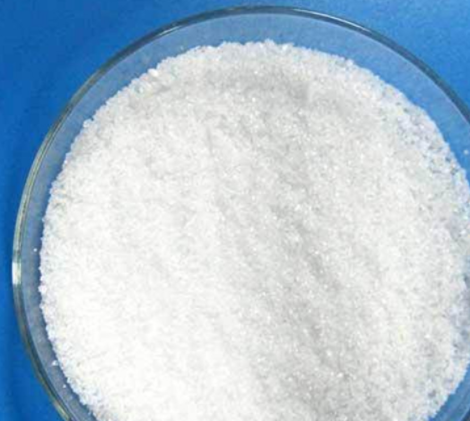Glass clarifiers are commonly used auxiliary chemical raw materials in glass production. Any raw material that can decompose (gasify) at high temperature during the glass melting process to produce gas or reduce the viscosity of the glass liquid to promote the elimination of bubbles in the glass liquid is called a clarifier. According to the mechanism of glass clarification, it can be divided into: oxide clarifier (commonly known as: oxygen clarification), sulfate clarifier (commonly known as: sulfur clarification), halide clarifier (commonly known as: halogen clarification) and composite clarifier (commonly known as: Compound clarification).

1. Oxide clarifier
Oxide clarifiers mainly include white arsenic, antimony oxide, sodium nitrate, ammonium nitrate, and cerium oxide.
1. White arsenic
White arsenic, also known as arsenous anhydride, is a commonly used clarifying agent with excellent clarification effect. It is commonly known as “Clarification King” in the glass industry. But white arsenic must be used in conjunction with nitrate to achieve a good clarification effect. White arsenic is slightly soluble in cold water and easily soluble in hot water. It is highly toxic. It is a white crystalline powder or an amorphous glassy substance. As a byproduct of gold smelting, arsenic gray is often gray, gray or gray-black. It is mostly used as a clarifying agent. arsenic. When the white arsenic is heated to more than 400 degrees, it will generate arsenic pentoxide with the oxygen released by the nitrate at high temperature. When heated to 1300 degrees, the arsenic pentoxide will decompose to generate arsenic trioxide, which reduces the partial pressure of the gas in the glass bubbles. It is conducive to the growth of bubbles and accelerates the elimination of bubbles, so as to achieve the purpose of clarification.
The amount of white arsenic is generally 0.2%-0.6% of the batch amount, and the amount of nitrate introduced is 4-8 times the amount of white arsenic. Excessive use of white arsenic not only increases the volatilization, but also pollutes the environment and is harmful to the human body. 0.06 grams of white arsenic can cause death. Therefore, when using white arsenic, a special person should be assigned to keep it in order to prevent poisoning incidents. The glass with white arsenic as the clarifying agent is easy to reduce and blacken the glass during the operation of the lamp, so the white arsenic should be used less or not in the lamp glass.
2. Antimony oxide
The clarification effect of antimony oxide is similar to that of white arsenic, and it must also be used in conjunction with nitrate. The clarification and decomposition temperature of using antimony oxide is lower than that of white arsenic, so antimony oxide is often used as a clarifying agent when melting lead glass. In soda lime silicate glass, 0.2% antimony oxide and 0.4% white arsenic are used as clarifying agents, which has a better clarification effect and can prevent the generation of secondary bubbles.
3. Nitrate
Nitrate alone is rarely used as a clarifying agent in glass, and it is generally used as an oxygen donor in combination with variable valence oxides.
4. Cerium dioxide
Cerium dioxide has a higher decomposition temperature and is a better clarifying agent, which is widely used as a raw material. When used as a clarifying agent, it does not need to be combined with nitrate, and it can release oxygen by itself at high temperature to speed up clarification. In order to reduce costs, it is often used in combination with sulfate in the production of glass balls to achieve good clarification effects.

2. Sulfate clarifier
The sulfates used in the glass are mainly sodium sulfate, barium sulfate, calcium sulfate, and sulfate with high decomposition temperature, which is a high-temperature clarifying agent. When sulfate is used as a clarifying agent, it is best to use it in conjunction with oxidizing agent nitrate, and cannot be used in combination with a reducing agent to prevent sulfate from decomposing at low temperature. Sulfate is commonly used in bottle glass and flat glass, and its dosage is 1.0%-1.5% of the batch.
3. Halide clarifying agent
Mainly include fluoride, sodium chloride, ammonium chloride and so on. Fluoride is mainly fluorite and sodium fluorosilicate. The amount of fluorite used as a clarifying agent is generally calculated based on the 0.5% fluorine introduced into the batch. The general dosage of sodium fluorosilicate is 0.4%-0.6% of the amount of sodium oxide in the glass. During the melting of fluoride, part of the fluorine will generate hydrogen fluoride, silicon fluoride, and sodium fluoride. Its toxicity is greater than that of sulfur dioxide. The influence on the atmosphere should be considered when using it. The vaporization and volatilization of sodium chloride at high temperature can promote the clarification of the glass liquid. The general dosage is 1.3%-3.5% of the batch material. Too much will emulsify the glass. It is often used as a clarifier for boron-containing glass.
Four, compound clarifier
The composite clarifier mainly uses the three clarification advantages of oxygen clarification, sulfur clarification and halogen clarification in the clarification agent, and gives full play to the synergistic and superimposed effects of the three, which can achieve the effect of continuous clarification and greatly enhance the clarification ability. It is a single clarification. The agent is incomparable. According to the development stage, there are: the first generation of composite clarifiers, the second generation of composite clarifiers and the third generation of composite clarifiers. The third generation of composite clarifiers is also called a new generation of environmentally friendly composite clarifiers, which are green and environmentally friendly. Known for its safety and efficiency, it is the future development direction of the glass fining agent industry and the inevitable trend of achieving arsenic-free formulations in the glass industry. The general dosage is 0.4%-0.6% of the batch. The compound clarifier has been widely used in bottle glass, glass balls (medium alkali, alkali-free), medicinal glass, electric light source glass, electronic glass, glass-ceramics and other glasses. Products industry.
2. Sulfate clarifier
The sulfates used in the glass are mainly sodium sulfate, barium sulfate, calcium sulfate, and sulfate with high decomposition temperature, which is a high-temperature clarifying agent. When sulfate is used as a clarifying agent, it is best to use it in conjunction with oxidizing agent nitrate, and cannot be used in combination with a reducing agent to prevent sulfate from decomposing at low temperature. Sulfate is commonly used in bottle glass and flat glass, and its dosage is 1.0%-1.5% of the batch.
3. Halide clarifying agent
Mainly include fluoride, sodium chloride, ammonium chloride and so on. Fluoride is mainly fluorite and sodium fluorosilicate. The amount of fluorite used as a clarifying agent is generally calculated based on the 0.5% fluorine introduced into the batch. The general dosage of sodium fluorosilicate is 0.4%-0.6% of the amount of sodium oxide in the glass. During the melting of fluoride, part of the fluorine will generate hydrogen fluoride, silicon fluoride, and sodium fluoride. Its toxicity is greater than that of sulfur dioxide. The influence on the atmosphere should be considered when using it. The vaporization and volatilization of sodium chloride at high temperature can promote the clarification of the glass liquid. The general dosage is 1.3%-3.5% of the batch material. Too much will emulsify the glass. It is often used as a clarifier for boron-containing glass.
Four, compound clarifier
The composite clarifier mainly uses the three clarification advantages of oxygen clarification, sulfur clarification and halogen clarification in the clarification agent, and gives full play to the synergistic and superimposed effects of the three, which can achieve the effect of continuous clarification and greatly enhance the clarification ability. It is a single clarification. The agent is incomparable. According to the development stage, there are: the first generation of composite clarifiers, the second generation of composite clarifiers and the third generation of composite clarifiers. The third generation of composite clarifiers is also called a new generation of environmentally friendly composite clarifiers, which are green and environmentally friendly. Known for its safety and efficiency, it is the future development direction of the glass fining agent industry and the inevitable trend of achieving arsenic-free formulations in the glass industry. The general dosage is 0.4%-0.6% of the batch. The compound clarifier has been widely used in bottle glass, glass balls (medium alkali, alkali-free), medicinal glass, electric light source glass, electronic glass, glass-ceramics and other glasses. Products industry.
Post time: Dec-06-2021
